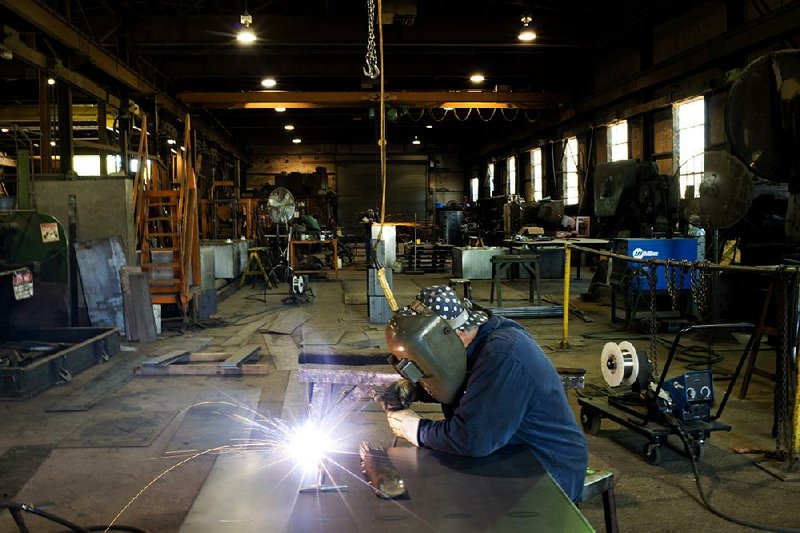After spending years searching for enough crude to pump, the U.S. oil and natural gas industry now is struggling to find and pay enough skilled workers to tap the abundant supply in shale rock, putting $100 billion in planned petrochemical projects at risk, industry analysts say.
Engineers and similar professionals earned an average $183,000 to $285,000 in 2012 depending on their position and background, a 20 percent to 50 percent jump since 2009, NES Global Talent data show. Wages in energy and mining have grown at nine times the rate of all industries since 2008, and starting salaries for petroleum engineering graduates are about $98,000, up 9.7 percent since 2008, according to PayScale Inc.
The need is acute at the newest chemical, refining and export complexes that serve a shale-drilling renaissance that has given U.S. companies the competitive advantage of low natural gas prices.
The ongoing work in Arkansas’ Fayetteville Shale and early exploration of the Brown Dense formation in south Arkansas place the state at the production end of the natural gas and oil stream. Most of the workers are needed at refineries that are planned or still under construction.
As shale projects and their infrastructure multiply, the ensuing war for talent will double labor costs by 2020 for skilled workers such as geoscientists and engineers, according to NES Global and Piper Morgan Associates.
“If you can spell ‘shale,’ you can get a job,” Ryan Lance, chief executive officer of ConocoPhillips Inc., said last Tuesday at the IHS CERA Week energy conference in Houston.
Wage costs that already have pushed up price tags for energy-related plants from Australia to Canada by as much as 20 percent are forecast to balloon more, putting $100 billion of U.S. projects at risk during the next decade, based on data compiled by Bloomberg.
The crush of potential projects, the breakneck pace of drilling and greater manpower needs because of the complexity of efforts - which include drilling five miles below the seafloor - have driven up U.S. labor costs for some positions, Dane Groeneveld, North America regional director for NES Global, said in a telephone interview.
“The cost of labor is being bid up, and that’s a problem for our competitiveness,” said Peter Robertson, a former vice chairman of the board of Chevron Corp. who is now an independent senior adviser to Deloitte LLP. “What a wonderful problem to have.”
Projects already being built by companies including Chevron Phillips Chemical Co. and Cheniere Energy Inc. should escape the hurdle, as they are expected to be completed before half of the global energy work force retires in the next 10 years.
George Biltz, a Dow Chemical Co. vice president, said “early is better” when it comes to avoiding a labor pinch. Dow expects to complete construction of new ethylene and propylene plants in Freeport, Texas, by 2017 at a cost of $4 billion.
Sasol Ltd. may need 7,000 laborers at the peak of construction for a pair of new factories to be built for as much as $20 billion near Lake Charles, La., said Mark Schnell, general manager. Sasol may phase construction to make the best use of available resources, he said.
“It’s going to be a challenge for the industry,” Schnell said. “We need to do this as quick as possible.”
Competitors may be forced to scrap plans for new plants if regulators, educational institutions and industry leaders are unable to meet demand, according to Deloitte’s Robertson, who didn’t cite company names.
Demand for skilled workers is so great that companies such as ConocoPhillips have begun to poach graduates from other fields such as electrical, mechanical and civil engineering, and develop programs to train them in petroleum engineering, said Sheila Feldman, vice president of human resources for the Houston-based energy company.
“We’re really trying to expand the universe of candidates,” Feldman said at the IHS CERA Week conference. “We have to find new solutions to old problems.”
ConocoPhillips is also developing a program to recruit military veterans, she said.
The practice of poaching engineers and skilled workers from outside the energy industry and training them is likely to grow, said NES’ Groeneveld. Many energy professionals are in their 50s or in their 30s, with a gap in between, said Carl Tricoli, global head of natural resources at Denham Capital Management LP in Houston.
“The oil and gas industry has a missing generation,” Tricoli said in a telephone interview. “You have men and women who are in their 50s, and then from call it 1985 to the late 1990s, no one was graduating with petroleum engineering degrees and those sorts of things.”
Oil prices between 1985 and 1995 averaged below $20 a barrel in New York.
Technological advances including the use of horizontal drilling and hydraulic fracturing have allowed the U.S. to vie with Russia as the world’s largest gas producer and may push oil output ahead of Saudi Arabia by 2020, according to the International Energy Agency.
The energy boom was among the reasons Harvard University graduates in 2012 were out earned by those from the South Dakota School of Mines & Technology, according to PayScale Inc.
In Texas, the epicenter of the project boom on the U.S. Gulf Coast, the unemployment rate was 6.1 percent in December, compared with 7.4 percent a year earlier, the Texas Workforce Commission said.
Front Section, Pages 1 on 03/12/2013

